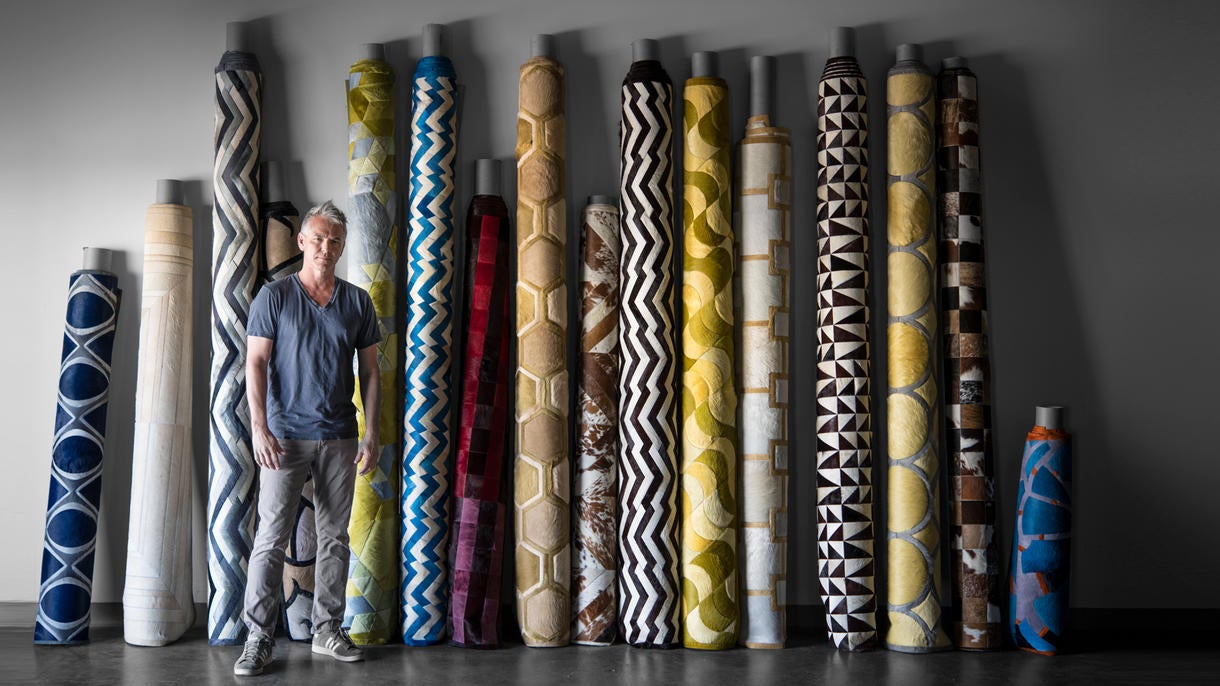It was 2001, and Kyle Bunting—then an executive at a television company and a dabbler in Bay Area real estate—had a flash of inspiration that would determine the next two decades of his career. He had just purchased a Christopher Farr carpet for his home and put it in the same room as a piece of art his father had made in the 1970s—a map of Texas pieced together from cowhide. The two items sat side by side for months, until all of a sudden Bunting put them together.
“It doesn’t make us great and it doesn’t make us geniuses, it probably makes us lucky … I was just in the right mind frame at the right time to realize, Hey, wait a second, what if we did custom decorative carpets, but we did them in hide?” he tells host Dennis Scully on the latest episode of the Business of Home podcast.
For the past 20 years, Bunting has been doing just that: decorative carpets (and wallcoverings, and upholstery, and pretty much anything else you can imagine—even fuzzy trucker dice) in hide. Having more or less invented the category, his creations took the design world by storm, and within a few years he was represented by some of the best showrooms in the country, including De Sousa Hughes, David Sutherland, Holly Hunt and John Brooks.
However, over time, Bunting began to question whether the multiline model was right for him. Partially, multilines developing their own house lines began to make a dent in his sales. Partially, having an intermediary in the relationship with designers began to feel clunky. And partially, Bunting—very much an independent spirit—was just itching to put his hands firmly on the wheel and steer his own ship.
“Every brand that is represented by someone else can relate to the first time they do something direct with a client and they get that email that says, ‘Hey, this is how we do business, and let me remind you, those are our clients,’” he says. “And they’re right. But they’re not saying ‘our’ and including us; they mean their clients.” In the spring of last year, he cut the cord completely, pulling out of a relationship with Edelman Leather and the remaining independent multilines who sold his product.
Despite the frustration with the way his business was interacting with the multiline model, Bunting is a fan: “I wouldn’t want to be in a design business that didn’t have a multiline component—they bring so much value.” And he’s candid about the challenges of going the independent route: “It’s a lot more expensive than I thought it would be!” But for the ability to do things the way he envisions them, for Bunting, going back isn’t really on the table.
“We’ve learned that we now control the message with our clients, and so when we do one project, that designer understands it for life,” he says. “That builds a relationship with a client that we now own instead of someone else.”
This episode was sponsored by Rebecca Atwood Design and Universal Furniture. Below, listen to the episode. If you like what you heard, subscribe to the podcast (free of charge!) to get a new episode every week.




























